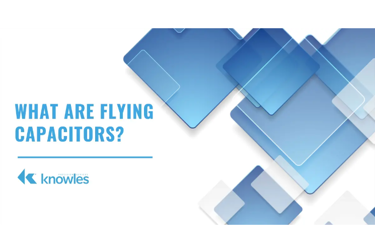What are Flying Capacitors?

As demand for high-efficiency and high-power-density inverters continues to grow, the so-called “flying” capacitor multilevel inverter is emerging as a strong choice for many power electronics systems. Since these capacitors can “float” to different electric potentials depending on the connected semiconductor switching structure and state, they help balance out voltage level differences due to manufacturing tolerances, temperature variations, and other factors. These capacitors are also helpful in balancing voltage across the structure by temporarily storing and releasing energy as needed, increasing power density and quality, and optimizing the use of existing voltage availability.
What is a Flying Capacitor?
A flying capacitor is a type of capacitor that is used in multi-level inverters, common in applications such as electric vehicle (EV) inverters, battery management systems (BMSs), renewable energy systems, and other power electronics. The main function of a flying capacitor is to store and transfer energy between different levels of the inverter, using multiple capacitors connected in series and parallel to produce a desired voltage level.
Example: Flying Capacitors in a Battery Management System
Popular application areas for flying capacitors include EVs and solar inverters due to their lightweight, compact nature, and ability to help even out voltage and extend longevity of components. For example, within an EV BMS, a flying capacitor can be used to smooth out fluctuations in the voltage of the battery pack. The battery pack in an EV typically consists of many individual cells connected in series and parallel, and these cells can have slight variations in their voltage levels due to manufacturing tolerances, temperature variations, and other factors.
Get unlimited access to:
Enter your credentials below to log in. Not yet a member of Med Device Online? Subscribe today.
